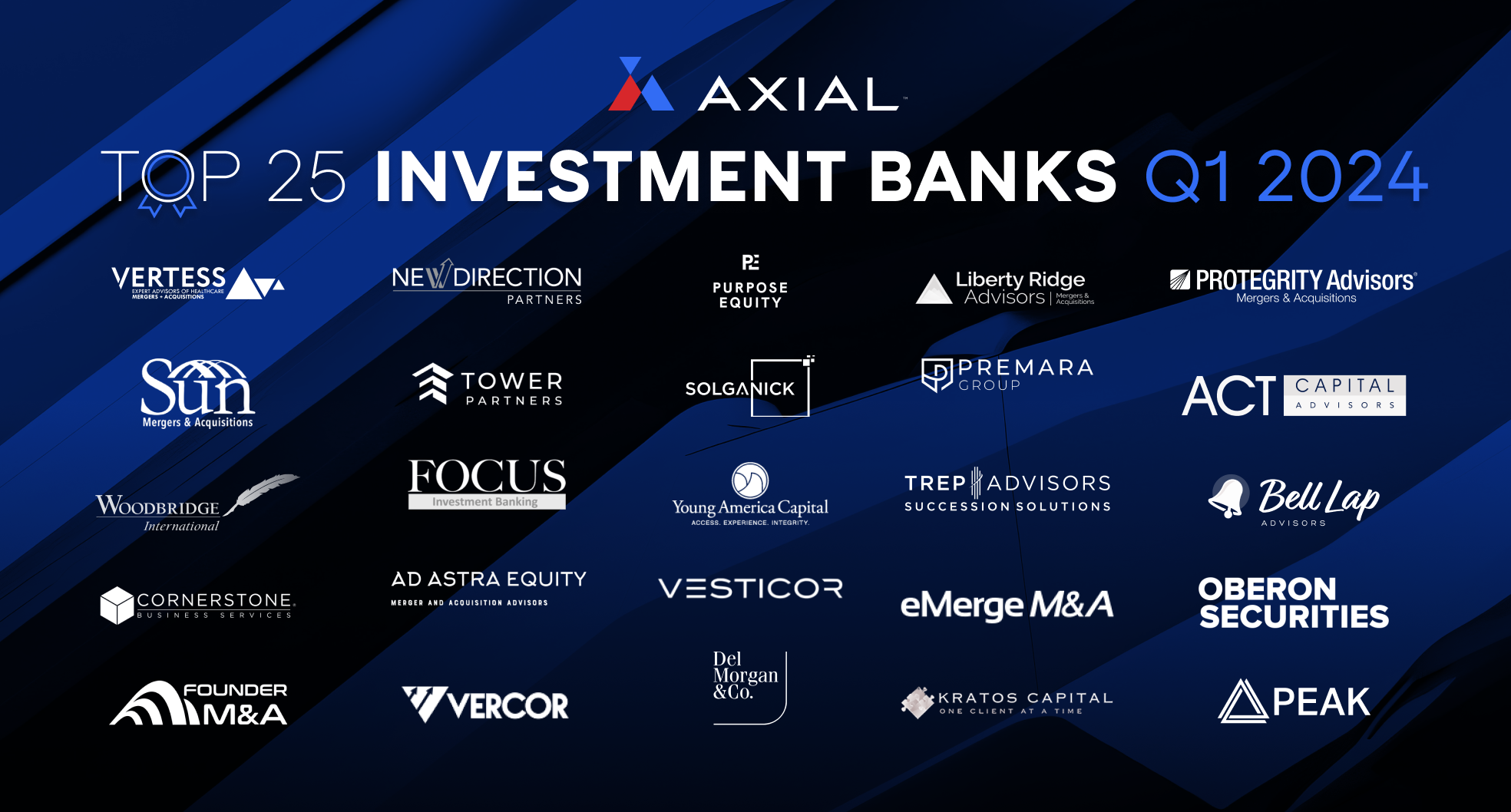
Top 25 Lower Middle Market Investment Banks | Q1 2024
Axial is excited to release our Q1 2024 Lower Middle Market Investment Banking League Tables. To assemble this list, we…
Advisors, Business Owners, Private Equity
Tags
Networking event like Axial’s Concord, which is coming up on October 24, offers a great opportunity to get face-to-face with buyers, funders and investors in a more informal environment. However, with limited time and lots of competition for attention, how can you be sure that you stand out?
Your elevator pitch is the hook with which you can reel in a little more interest from a prospective investor. Attention spans are short, and if it takes you more than 20 seconds to convey your concept, the attention of an investor is likely to drift.
A strong elevator pitch is scalable. That means you get the idea across in your first sentence. Then, if you have the time and/or are invited to expand further, you have a second and third sentence ready.
An example of a scalable, 20-second elevator pitch could be: “We’re the Uber of freight delivery. Using our app, anyone can see and book real-time transport on vans and lorries that have spare capacity. This is cheaper, quicker and better for the environment than existing options.”

As management guru Steven Covey said, ‘Seek first to understand, then to be understood’. In order to persuade an investor that your business is a good fit, you need to know what his or her interest is. So ask questions first to discover whether there is likely to be genuine mutual interest.
If there is a good fit, use what you have learned to tailor what you talk about. Focus on the areas of interest to that investor and show how YOUR business will help THEM fulfill their investment mandate. This changes the dynamic of your conversation, as your approach is now about helping the investor, rather than selling to them.

Stories are your secret weapon. Dry facts and data connect with the logical and judgmental part of our brains, while stories connect with the emotional decision-making center. Because we buy into them emotionally, stories are more memorable, persuasive and interesting.
Stories are also more relatable. It’s hard to relate to the millions of people who will benefit from a water purifying device. But tell us about one person who is suffering due to the lack of clean water and we’re more likely to listen and take action. Stories make us care.
So use stories to weave in the key messages you want to convey. Instead of explaining your business, tell the story of the impact your product has had on a customer. Use a story to explain how your product found a niche in the market. Or introduce an underserved segment of the market using a story about a person in that segment.

People commonly assume that investors will judge them primarily on competence. However, research has shown that warmth is equally important as competence when it comes to investment decisions.
That’s one of the reasons why we film our clients during our time with them. When we look at the footage together, they are often surprised by the negative body language signals they display without realizing it.
As Paul Farrow mentions in this video (at 3 minutes and 34 seconds), warmth isn’t enough to impress investors on its own. But if investors find you too cold – if they don’t like you – they won’t invest. There are simple changes you can practice to project more warmth. For example, open up your body language by avoiding crossing your arms or holding objects in front of you. Smile more, ask more questions and maintain eye contact for longer.

One of the most important parts of your interaction with an investor is your finish. Psychologists have noted a ‘recency effect’, which means that our memory of an interaction is weighted towards the last piece of information we receive.
If your conversation with the investor has gone well then you will probably have gone into some details in response to his or her questions. Before parting, agree next steps so both of you are clear on how you will follow up.
Then, highlight your key message again so it’s the last thing that is left in the investor’s mind. This repetition also helps cement it into their memory.
This is a guest post from Benjamin Ball Associates, an award-winning consultancy that transforms how businesses pitch, present and persuade. Benjamin Ball Associates has over ten years’ experience of helping companies large and small to stand out with investors.
